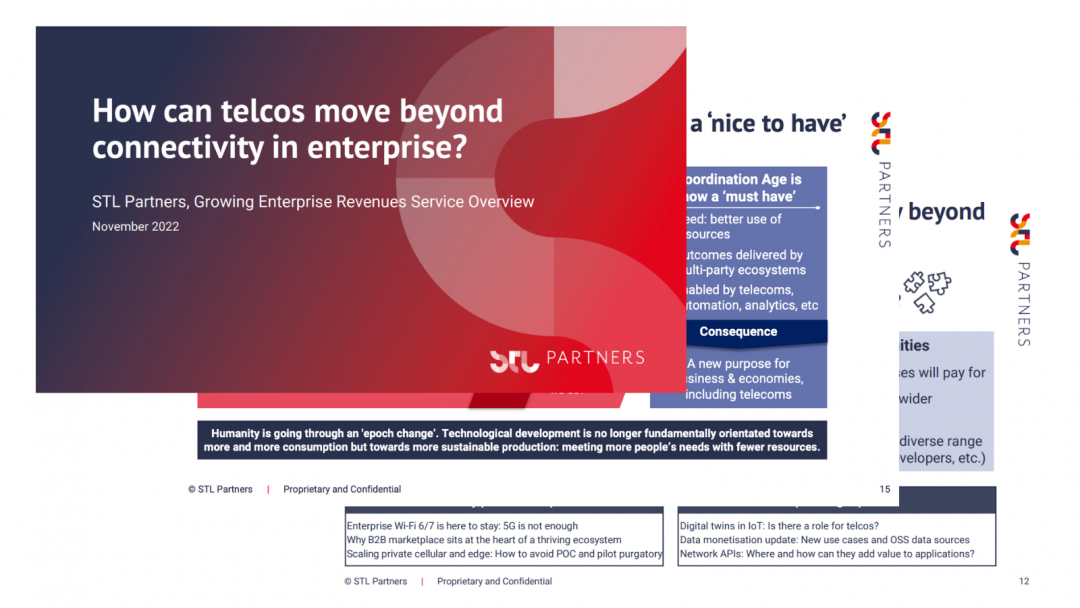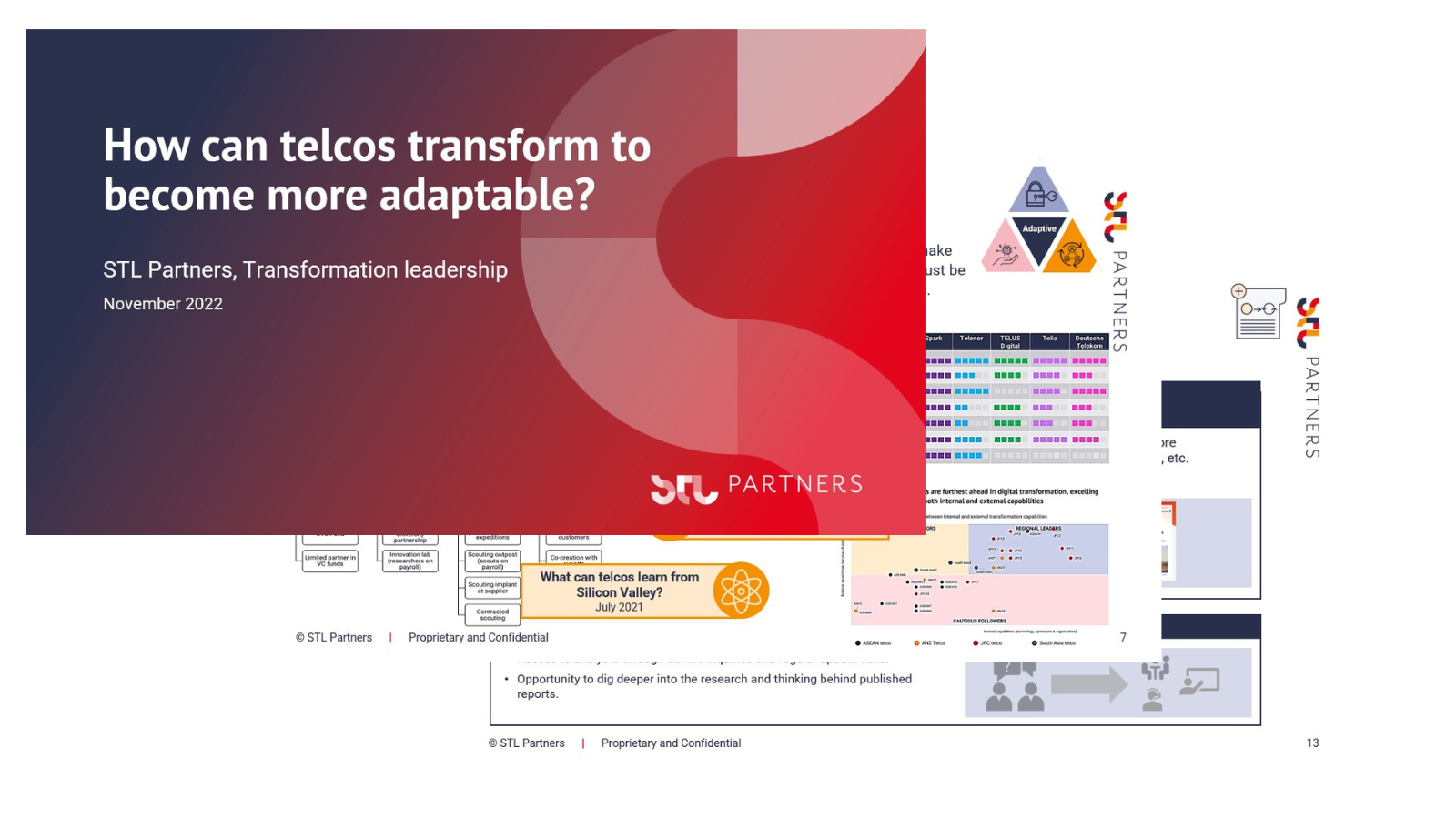
Satellite and telco industry convergence: evolution not revolution
STL Partners conducted research through conversations with key stakeholders in both the satellites and telecoms industries. We held interviews with satellite vendors (e.g. manufacturers of satellites and ground equipment), satellite service providers (SSPs), and traditional mobile network operators (MNOs) to get a balanced understanding of attitudes across the wider ecosystem. In this article, we detail our findings on the impact of 5G and new entrants to the satellite market, and recommendations for SSPs going forward.
3GPP Release 16 brought the first standards to reference non-terrestrial networks, i.e., satellites including Low Earth Orbits (LEOs), Medium Earth Orbits (MEOs), Geostationary Earth Orbits (GEOs) and High Altitude Platform Station (HAPS); aircraft; airships and balloons. The 3GPP standard has put them at the centre of the discussion around 5G network convergence, focusing on providing a variety of different options for non-terrestrial networks (NTNs) in 5G. As a result of this, satellite players are largely optimistic that Release 16 will boost their profile with MNOs. Release 17 is expected to bring more clarity with NTNs, progressing from the study to the normative phase and exploring the technical details of implementing the scenarios outlined in Release 16.
As well as the new 5G standards raising the profile of the satellite industry, high-profile players with abundant resources have entered the satellite market and are now disrupting it, drawing further attention to the industry. These new entrants are publicly stating intentions to focus on the consumer broadband market but are also starting to build out their networks to support internal business cases such as logistics for Amazon and connected cars for SpaceX. They are also targeting remote and underserved geographical areas which have typically been served by existing satellite service providers. Launching Low Earth Orbits does present new entrants with challenges. Although they are cheaper than Medium Earth Orbits and Geostationary Earth Orbits, Low Earth Orbits require higher number of satellites to provide effective coverage and they have a fairly short lifetime (5-6 years versus Geostationary Earth Orbits’ 10-15 years), requiring sufficient short-term demand for consumer satellite broadband. However, despite Low Earth Orbits not necessarily being quite the disruptive business case that they are perceived to be, new entrants can buy the business case through an OPEX-led model. With all this in mind, now is the time for telcos to be aware of the changing market dynamics and new business models that their competitors might be exploring, monitor what moves the new entrants are making, and start collaborative conversations with satellite service providers and the new entrants such as Amazon and SpaceX.
5G: an opportunity but not a revolution
Despite global society being connected now more than ever, broadband rollout is a challenge in densely populated areas, as many operators are struggling to scale and densify networks at the same rate demand increases. There are also scarcely populated areas where it is difficult for broadband to access. For example, in the capital cities of India, broadband use is high, but usage in rural areas is amongst the lowest in the world. While it will be many years before 5G networks deliver dependable coverage in urban areas and reach into rural areas, satellites can potentially help to fill the gaps, particularly for highly distributed enterprise IoT needs.
While satellite players hope that 5G will present the opportunity to boost their profile with MNOs, undoubtedly this will be a long process. Although there has been interest from telcos in partnering with the satellite market, it has been slow and predominantly exploratory. As well as stemming from the recent 5G 3 standards, operators’ interest in this area is also driven by the entrance of new high-profile companies into the market such as SpaceX (Starlink) and Amazon (Project Kuiper).
A guide to non-terrestrial networks
Satellite networks serve a whole host of sectors including oil, hospitality, lotteries and emergency response. These are usually part of extended wide-area networks (WANS) that operate as a mix of terrestrial networks, wireless and satellite. They deliver essential services such as point-of-sale transactions, training through cloud-based services, and inventory control.
Terminology
- Non-terrestrial networks (NTNs): this term refers to all spaceborne vehicles (satellites – LEOs, MEOs and GEOs) and airborne vehicles (UAS – Unmanned Aircraft Systems and HAPS – High Altitude Platform Station).
- Non-terrestrial operators (NTOs): the term for those that operate spaceborne and airborne vehicles.
- Satellite service providers (SSPs): the term for those that operate spaceborne vehicles and satellites.
- Terrestrial operators: the term ‘telco’ is used to refer to traditional MNOs, but there are others in the terrestrial ecosystem, such as IoT-operators and mobile virtual network operators (MVNOs), who have a potentially more open-minded attitude towards satellites.
- GEO/MEO/LEO satellites: these refer to satellites fixed at different altitudes over Earth, outlined in Figure 1. Their levels of altitude affect coverage, latency and maintenance costs.
Figure 1: Differences between low earth, medium earth and geostationary orbits

The satellite ecosystem
- Upstream: This refers to the private and/or public companies that produce the actual spaceborne or airborne vehicles themselves, or the launching technologies.
- Downstream: This refers to companies that provide services to the end-customers, which mainly includes non-terrestrial operators, terrestrial operators, and manufacturers of the ground technology (software and/or hardware).
- New entrants: Amazon and SpaceX are two big, high-profile companies who have entered the satellite market by building and are really shaking up business models and market dynamics. As evidenced by the diagram below, Amazon and SpaceX are working across the whole supply chain, both upstream and downstream.
Figure 2: Overview of the NTN ecosystem

5G has put the satellite market on the map
Through our research it has become apparent that both SSPs and vendors agree that 5G has made SSPs relevant. SSPs now believe that 5G will enable them to serve a host of new applications, while MNOs largely see satellite connectivity continuing to serve their traditional of strength. However, as the use cases shown on the right of the diagram below are not well defined. This means there is not necessarily an obvious need for satellites yet and it is unrealistic to have aspirations in these areas. This could change if a clear pain point in the use case is being addressed in such a way that telcos consider it best to build out the capabilities themselves.
Figure 3: SSPs believe that 5G will enable them to serve a host of new applications

However for now, terrestrial solutions are the preferred option
As it stands, traditional MNOs will almost always opt for terrestrial methods before considering satellite alternatives. For MNOs, satellite alternatives present a series of challenges:
- Cost. Cost is recognised as a big factor by SSPs, satellite vendors and terrestrial operators. Although the perception is that costs are coming down, particularly for , it is not clear when this will happen significantly enough to make non-terrestrial methods a viable option. However, there is a possibility that big players like Amazon and SpaceX could take on the cost of disrupting the satellite connectivity market. Part of their payback strategy here is going directly to consumers and enterprises, in turn driving telcos to defend market share by partnering with SSPs.
- Technology. Technology and technological understanding present problems for the NTN market. At the moment, ground equipment is not interoperable and each vendor has its own proprietary technology. To move from one satellite to another, telcos would have to replace all their modems.
- Demand. Governments around the world rely on satellites for enhanced rural coverage, emergency and security services, and back-up for disaster relief. Therefore, demand for terrestrial-satellite partnerships have often been due to government initiatives, such as connecting sparsely populated areas, or applications, such as military and defence, and public safety. Currently they are seeing limited demand from enterprise customers. New entrants SpaceX and Amazon are not only benefitting from these government contracts, but also targeting these government initiatives to improve access to broadband in those remote areas.
Recommendations
We believe both telcos and SSPs will benefit from building alignment to ensure they are well-placed to capitalise on the opportunities promised by 5G. As a result of this research, and taking into consideration the perceived challenges of non-terrestrial solutions, STL Partners suggests the following to SSPs:
- Embrace open standards: 5G now offers a more flexible framework for connectivity than ever before, when previously the integration of satellites into cellular architecture was more difficult. Both NTNs and TNs will see the benefits in serving even basic use cases, such as rural coverage, by moving away from proprietary models and embracing open standards.
- Support telcos with their areas of concern: 5G gives telcos the opportunity to expand their service portfolio and drive revenue growth, however potential issues have already been highlighted such as latency, coverage and mobility. With this in mind, SSPs should take an active role in identifying areas of concern for telcos to support them in refining their application and service portfolios (with 5G and other emerging technologies e.g. edge computing) and expanding their addressable market, to demonstrate the potential of satellite solutions.
- Build out the satellite proposition from its core: SSPs should build on their reputation as trusted providers of backhaul connectivity for remote and mobile use cases and use this as a gateway for more expansive propositions in the long term. Instances such as the agricultural industry using satellite coverage to connect vast, remote areas, and satellite solutions being used for back-up connectivity in the case of natural disasters, are cases when terrestrials will need a satellite.
Download this article as a PDF
Read more about growing enterprise revenues
Growing Enterprise Revenues overview pack
Our overview pack explores how the telecoms industry can leverage new business models to meet enterprise customer needs
Network APIs: Unlocking new value in the telco cloud
Network APIs may offer an answer to the question of how to monetise recent and upcoming telco cloud deployments. Virtualised networks upgrade APIs and enhance the value they offer to developers and customers. To unlock their potential, telcos should focus on optimising their commercial models.
Network Futures overview pack
Our Network Futures Service provides a roadmap for new network ownership, regulation and partnership models, and insights. into new technologies, industry dynamics and new players.
Core-as-a-Service since 2018: Wgtwo
Core-as-a-Service is not a brand new concept. Working Group Two, aka wgtwo – a smaller Scandinavian outfit, has been offering Core-as-a Service since 2018. We spoke to their CEO Erlend Prestgard about why wgtwo’s original mission to help telcos extract more value from connectivity remains as relevant in 2022.






